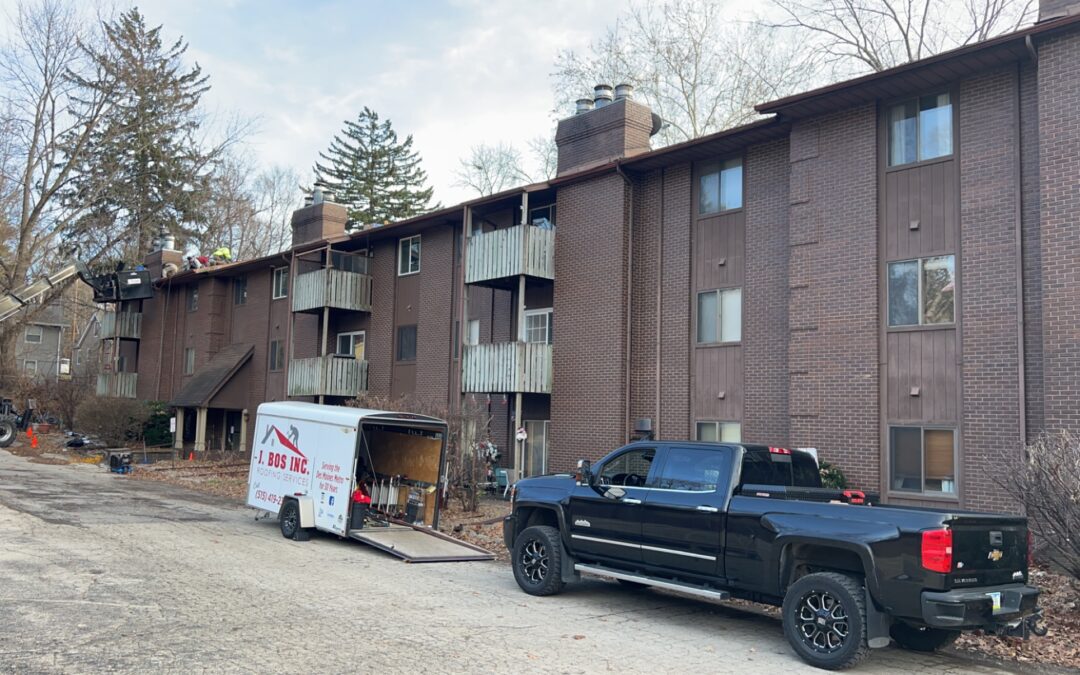Have you seen water stains on your ceiling?
If you’ve noticed unsightly water stains on your ceilings or walls recently, it might be more than just an aesthetic issue. With the recent hail and wind storms sweeping through the area, many homes have sustained roof damage that isn’t immediately obvious. Water stains are often one of the first signs that your roof may be compromised, and ignoring them can lead to more severe issues down the line.
Why Water Stains Are a Red Flag
Water stains aren’t just ugly—they’re a signal that water is making its way into your home. This typically means that your roof’s protective barrier has been compromised, allowing moisture to seep through. Stains often appear as discolored patches on ceilings or walls, ranging from light yellow to dark brown, and may even develop mold if left untreated.
The most common causes of water staining related to roof issues include:
- Blown-Off Shingles: Severe winds can rip shingles completely off your roof, leaving the underlayment exposed to rain. Even a single missing shingle can be enough to allow water to seep in.
- Broken or Cracked Shingles: Impact from hail or flying debris can cause shingles to crack or break. Cracks allow moisture to penetrate the surface and work its way into the structure below.
- Hail Damage and Impact Holes: Large hailstones can create dents and holes in shingles, compromising their protective layer. Sometimes, the damage isn’t visible from the ground, making a professional inspection essential.
- Shingle Granule Loss: Wind and hail can strip the protective granules from shingles, making them less resistant to moisture and UV rays. Granule loss often leaves dark or bare patches on the roof.
- Lifted or Curled Shingles: Strong winds can partially lift shingles, breaking the seal and allowing water to blow underneath during storms. Over time, this lifting can worsen, leading to leaks.
- Flashing Failures: Flashing around chimneys, vents, and roof valleys can get bent, cracked, or pulled away by high winds. Without properly sealed flashing, rainwater can easily find its way inside.
- Damaged or Clogged Gutters: Wind can blow debris into gutters, causing blockages. This leads to water pooling and spilling over the edges, soaking the fascia and roof deck.
- Ice Dams: In colder months, ice dams form when snow melts and refreezes at the roof’s edge. This traps water on the roof, forcing it under shingles and into your home.
The Dangers of Ignoring Water Stains
Ignoring water stains can lead to a host of problems, including:
- Structural Damage: Water can weaken wooden beams and framing, causing your roof to sag or even collapse over time.
- Mold and Mildew Growth: Excess moisture creates the perfect environment for mold and mildew to thrive, which can lead to respiratory issues and health problems.
- Insulation Damage: When insulation becomes waterlogged, it loses its effectiveness, causing your energy bills to rise as your HVAC system works harder.
- Electrical Hazards: Water that infiltrates walls can come into contact with wiring, posing a serious fire risk.
- Expensive Repairs: The longer you let the problem go unaddressed, the more extensive and costly the repairs will become.
How to Check Your Roof After a Storm
If your home has recently been through a hail or wind storm, it’s crucial to perform a basic visual inspection as soon as it’s safe. Here’s what to look for:
- Missing or Damaged Shingles: Look for bare spots or shingles lying in your yard.
- Granules in Gutters: An excessive amount of granules collected in your gutters is a sign of shingle damage.
- Dented Metal Fixtures: Hail often leaves visible dents in gutters, downspouts, and metal roofing components.
- Leaks in Your Attic: Check your attic for damp insulation, mold growth, or visible leaks.
- Ceiling and Wall Stains: Even small stains can indicate a much larger problem.
Call a Professional Roofing Contractor
After inspecting your roof, it’s vital to have a professional evaluation to determine the full extent of the damage. At J. Bos Inc. Roofing Services, we specialize in identifying and repairing storm damage, from blown-off shingles to hail impact marks.
As a CertainTeed Certified Master Shingle Applicator, we ensure your roof repairs meet high-quality standards and maintain warranty coverage. If your shingles are still under warranty, we can replace them without incurring repair costs.
We’re also here to support you during the insurance inspection process. While we can’t negotiate or settle claims directly (per Iowa regulations), we can be present during the inspection to address questions related to the scope of work and ensure accurate damage assessment.
Don’t Wait—Get Your Roof Inspected Today
If you’ve spotted water stains or suspect your roof may have been damaged during recent storms, don’t wait to address it. A quick response can make all the difference in preventing more severe problems down the road.
Contact J. Bos Inc. Roofing Services today for a free inspection and reliable repairs. You can also check out our customer reviews on our Google Business page to see why homeowners across Iowa trust us to protect their homes.
Don’t let a small stain turn into a big problem—act now to protect your home from further damage! Tap to call J Bos Roofing.




